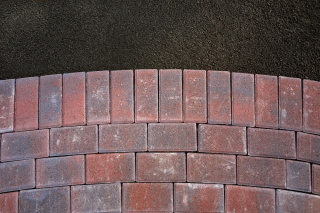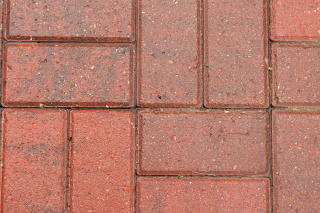Nothing says spring like sitting outside with your family and friends, enjoying the nice weather and a few drinks. But before you invite people over, take a look at your patio. Are your brick pavers covered in dirt, mildew, and grime? Since brick pavers are exposed to the elements 365 days a year, they are vulnerable to dirt, mold, pollen, and damage. To protect your pavers and keep your home looking beautiful, read on to learn the five most vital ways to keep your brick pavers clean all year long.
Sweep It Up
Any paver that needs to be fitted together will collect dirt in the gaps between the pieces. Brick pavers are especially susceptible to dirt buildup because of their small, porous crevices. One easy way to dislodge the dirt is to sweep the patio with a sturdy broom or brush. This loosens the dirt, which will make washing the pavers easier and more effective. As you sweep, keep your eye out for any weeds and remove them if you can.

Wash Off the Dirt
Sweeping helps to bring the dirt to the surface of the patio hardscape, but it will take a little more to remove the dirt completely. Nothing works better for this than a simple rinse. Use your garden hose to rinse the grime off the patio. Alternatively, you can also use mild soap and warm water to clean it.
Take Care of Stains
Once the dirt has been removed, you can get a better view of the pavers and any stains that may be on them. Though there is no harm in leaving the stains alone, you may want to remove them for aesthetic reasons. Plus, when left untreated, stains will occasionally spread. The treatment for the stain will depend on what caused it. Typically, however, these stains can be removed by using a store-bought cleaning solution or a homemade baking soda cleaner.
Remove Mold and Mildew
While cleaning, keep an eye out for any mold or mildew that may be growing on or between the brick patio pavers. If left alone, mold can cause health issues like allergies and respiratory issues for some people. Unfortunately, if you live in a humid climate, preventing new mold growth can be nearly impossible. You can, however, keep the mold growth under control with regular maintenance. To remove mold from your pavers, use a mixture of one part bleach and three parts water. Be mindful, however, that bleach can sometimes stain pavers. Before using the mixture on your patio, test it out on a small, discrete area to see if it will stain.

Check for Damage
No cleanup would be complete without a quick quality check. After you finish brushing, washing, and removing mold, look for any signs of harm. Time, weather, and general wear can all take a toll on pavers, no matter what they are made of. Structural problems like cracks, chips, and deep stains may require a partial replacement to fix. These issues only get worse with time, so it’s best to repair them as soon as you notice the issue. If there isn’t any damage but the pavers are askew, you can use sand filler to keep them in place. For more serious problems, consult your landscaper to discuss all of your available options.
No matter if you need a few new brick patio pavers in Cumming or you want an entirely different landscape design, contact us at Stoeckig Landscape Group.
